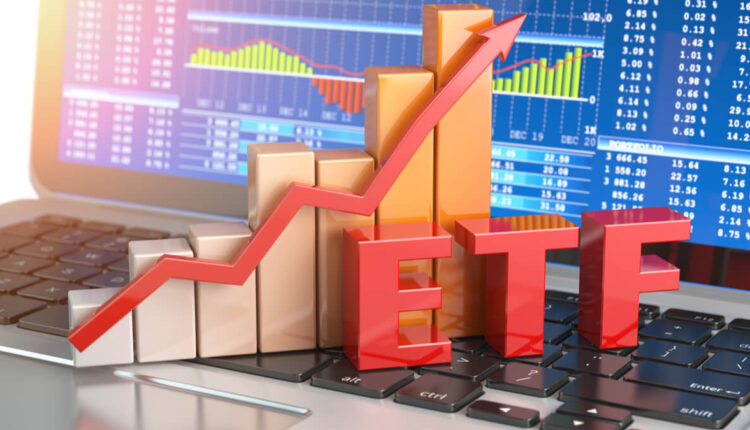Leveraged ETFs are often associated with short-term trading, speculative strategies, and high risk. While they can indeed be volatile, these financial instruments also hold a unique appeal for aggressive investors looking to maximize their returns. However, when it comes to incorporating leveraged ETFs into a retirement portfolio, the common wisdom is to proceed with caution. But what if there was a strategic way to harness the power of leveraged ETFs within a tax-advantaged retirement account?
In this guide, we’ll explore the potential benefits and risks of holding leveraged ETFs in an IRA or 401(k), and how you can strategically add these high-octane investments to your retirement portfolio to maximize growth without compromising tax efficiency.
Understanding Leveraged ETFs: High Risk, High Reward
What Are Leveraged ETFs?
Leveraged ETFs are funds that seek to deliver multiples of the performance of a specific index, such as the S&P 500 or Nasdaq-100. They use financial derivatives and debt to amplify the returns of the underlying index, typically on a daily basis. For example, a 2x leveraged ETF aims to deliver twice the daily return of its benchmark, while a 3x leveraged ETF targets three times the daily return.
- 2x Leveraged ETF: If the S&P 500 gains 1% in a day, a 2x leveraged ETF would aim to gain 2%. Conversely, if the S&P 500 loses 1%, the ETF would lose 2%.
- 3x Leveraged ETF: Similarly, a 3x leveraged ETF would aim to deliver three times the daily return, resulting in a 3% gain or loss for every 1% movement in the underlying index.
The Risks of Leveraged ETFs
While the potential for amplified returns is attractive, leveraged ETFs come with significant risks:
- Volatility Decay: Leveraged ETFs reset daily, meaning they are designed to achieve their targeted multiple returns over a single day. Over longer periods, volatility can cause the returns of a leveraged ETF to diverge significantly from the underlying index, often leading to lower returns than expected. This phenomenon is known as volatility decay or the “compounding effect.”
- Higher Costs: Leveraged ETFs often have higher expense ratios compared to traditional ETFs, which can erode returns over time.
- Short-Term Nature: Due to their daily reset feature, leveraged ETFs are typically recommended for short-term trading rather than long-term investing.
Why Consider Leveraged ETFs in a Tax-Advantaged Retirement Account?
Given the risks, why would an investor consider holding leveraged ETFs in a tax-advantaged retirement account like an IRA or 401(k)? The answer lies in the potential for maximizing returns in a tax-efficient manner, provided the strategy is approached carefully.
1. Sheltering High Turnover and Short-Term Gains
Leveraged ETFs are notorious for generating short-term capital gains due to their frequent trading and daily rebalancing. In a taxable account, these gains are taxed at ordinary income rates, which can be as high as 37% for high-income earners. This tax drag can significantly reduce the net returns of a leveraged ETF.
However, in a tax-advantaged account like an IRA or 401(k), you can defer taxes on all capital gains until you withdraw the money in retirement. In a Roth IRA, these gains can even grow completely tax-free. This makes tax-advantaged accounts the ideal place to hold leveraged ETFs, as they allow you to avoid the immediate tax consequences of frequent trading.
2. Maximizing Long-Term Growth Potential
While leveraged ETFs are designed for short-term use, some investors use them as part of a longer-term strategy, particularly in a bull market. In a tax-advantaged account, the compounding effect of tax-deferred or tax-free growth can amplify the benefits of this strategy.
For example, in a prolonged bull market, a 2x or 3x leveraged ETF in a Roth IRA could see substantial growth without any capital gains tax drag. This approach allows aggressive investors to capitalize on market upswings while taking full advantage of the tax benefits of retirement accounts.
3. Diversification of Risk
Incorporating leveraged ETFs into a broader retirement portfolio can provide diversification and the potential for outsized gains in specific sectors or market conditions. For example, a 3x leveraged ETF focused on the technology sector could be a high-risk, high-reward complement to more stable investments like bonds or dividend-paying stocks.
By allocating a small percentage of your retirement account to leveraged ETFs, you can enhance the growth potential of your portfolio while limiting your overall exposure to the risks associated with these investments.
How to Strategically Use Leveraged ETFs in a Retirement Account
1. Limit Your Exposure
Leveraged ETFs should only make up a small portion of your retirement portfolio, typically no more than 5-10%. This ensures that the potential for high returns is balanced against the risk of significant losses. By keeping your exposure limited, you can take advantage of the growth potential without jeopardizing your overall retirement strategy.
2. Pair with Stable, Income-Generating Assets
To mitigate the risks associated with leveraged ETFs, consider pairing them with more stable, income-generating assets such as REITs or high-dividend stocks within your retirement account. This combination can provide a balance between growth and stability, ensuring that your portfolio is not overly reliant on the performance of leveraged ETFs.
3. Rebalance Regularly
Given the daily reset feature of leveraged ETFs, it’s important to monitor and rebalance your portfolio regularly. Over time, the performance of leveraged ETFs can deviate from the expected multiple of the underlying index due to volatility decay. By rebalancing, you can ensure that your portfolio remains aligned with your investment goals and risk tolerance.
4. Focus on Bull Markets
Leveraged ETFs perform best in trending markets, particularly in strong bull markets where the underlying index is consistently moving in one direction. If you anticipate a prolonged market rally, a leveraged ETF in your IRA or 401(k) could be a way to capitalize on this momentum. However, it’s crucial to have a plan for exiting the position if market conditions change.
Example Leveraged ETFs for a Retirement Account
If you decide to incorporate leveraged ETFs into your retirement strategy, here are a few examples to consider:
- ProShares UltraPro QQQ (TQQQ)
- Focus: 3x leveraged exposure to the Nasdaq-100 Index.
- Why It’s a Fit: Ideal for aggressive investors looking to capitalize on the growth potential of technology and large-cap stocks. Best used in a Roth IRA to take advantage of tax-free growth.
- Direxion Daily S&P 500 Bull 3X Shares (SPXL)
- Focus: 3x leveraged exposure to the S&P 500 Index.
- Why It’s a Fit: Offers a way to amplify returns during strong bull markets. Suitable for a small allocation within a 401(k) or Traditional IRA.
- ProShares Ultra MidCap400 (MVV)
- Focus: 2x leveraged exposure to the S&P MidCap 400 Index.
- Why It’s a Fit: Provides exposure to mid-cap stocks, which can offer higher growth potential than large-cap stocks. A good option for diversifying your leveraged ETF exposure.
The Risks Revisited: Proceed with Caution
While the potential for high returns makes leveraged ETFs an intriguing option for tax-advantaged accounts, it’s essential to proceed with caution. These funds are not for everyone, and they require a clear understanding of the risks involved. If you’re considering adding leveraged ETFs to your retirement portfolio, make sure you:
- Understand the Mechanics: Leveraged ETFs reset daily, and the effects of volatility decay can be significant over time.
- Monitor Closely: Regular monitoring and rebalancing are crucial to managing the risks associated with leveraged ETFs.
- Consult a Financial Advisor: If you’re unsure about the role leveraged ETFs should play in your retirement portfolio, consult a financial advisor who can help tailor a strategy to your specific goals and risk tolerance.
Conclusion: Leveraged ETFs as a Strategic Tool in Retirement Accounts
Leveraged ETFs can be a powerful tool for aggressive investors looking to maximize growth within a tax-advantaged retirement account. While these funds come with significant risks, the ability to shelter short-term capital gains and take advantage of tax-deferred or tax-free compounding makes them an option worth considering—especially if you’re confident in your market outlook and willing to actively manage your portfolio.
By limiting your exposure, pairing leveraged ETFs with stable assets, and rebalancing regularly, you can strategically use these investments to enhance your retirement portfolio’s growth potential. Just remember, with great potential comes great responsibility—so proceed with caution and make sure your overall retirement strategy remains sound.




